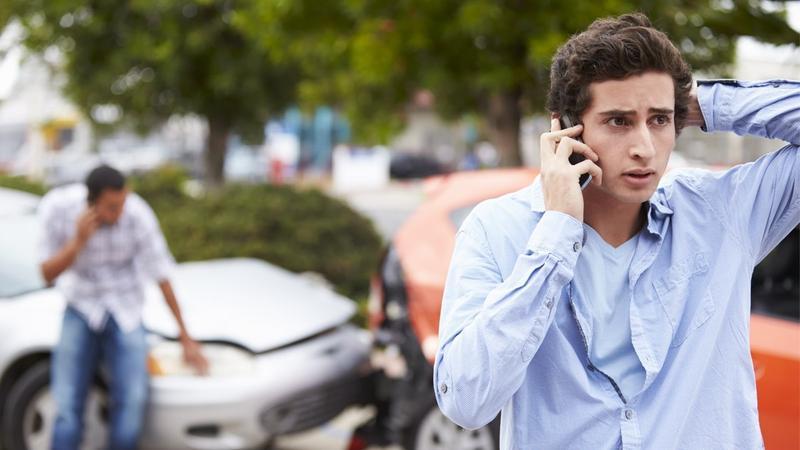This article has been updated from a previous version.
While a new driver’s lack of experience can contribute to accidents, they’re not automatically always at fault. Instead, the outcome of an accident involving a G1 license holder is determined just like any other accident.
In this article, we’ll explore different accidents involving G1 drivers, along with the resulting outcomes.
Read more: Know before you loan: Important facts about lending a vehicle
In this article:
When a G1 driver is not-at-fault
If a G1 driver is determined not to be at fault in an accident, the responsibility will rest with the other driver involved, the G1 driver will remain unaffected, and the vehicle owner won’t incur any increase in premiums.
The fact that one of the involved drivers holds a G1 license doesn’t impact how Ontario’s fault determination rules are applied in such cases. Despite the common perception that young drivers may be at fault due to inexperience, the fault determination rules focus solely on the accident’s factual details.
When a G1 driver is involved in a minor at-fault accident
As a G1 driver, if you’re involved in a minor at-fault accident, the vehicle owner’s insurance may not be directly impacted. FSRA states, “insurers can no longer use a minor at-fault accident that occurs on or after June 1, 2016, meeting certain criteria to increase your premiums.”
This provision is limited to one minor accident every three years and given that it meets certain conditions, such as:
- No payment has been made by any insurer.
- There are no injuries.
- Damages to each car and property were less than $2,000 per car and were paid by the at-fault driver.
While this guideline protects against premium increases for minor accidents, the repair costs to fix any damages out of pocket can still be substantial.
Related: What you need to know if you’re in a collision
Criminal offences and the G1 driver
If the G1 driver is in an accident and is charged and convicted of a criminal offence (like impaired driving, failing to remain at the scene of an accident or dangerous driving etc.), the vehicle owner’s insurance policy will not be able to cover to the vehicle.
Moreover, the G1 driver will face having demerit points and potential suspension, depending on the scale of their conviction. This will remain on their record and likely increase their insurance rate when they go on to purchase their own policy.
Related: What happens if your teen is caught stunt driving?
Demerit points and the G1 driver
If you’re a G1 driver in Ontario and you’re involved in an at-fault accident, the demerit points you accumulate for any faults resulting from the accident will be recorded on your driving record. Let’s break down the demerit points system:
3 demerit points will be added if you are convicted of:
- Using a hand-held wireless communications or entertainment device while driving.
- Driving through a railway crossing barrier.
- Failing to yield the right-of-way.
Four demerit points will be added if you are convicted of:
- Exceeding the speed limit by 30 to 49 km/h.
- Following too closely.
- Failing to stop at a pedestrian crossover.
Six demerit points will be added if you are convicted of:
- Careless driving.
- Racing.
- Exceeding the speed limit by 40 km/h or more on roads with a speed limit of less than 80 km/h.
- Exceeding the speed limit by 50 km/h or more.
- Failing to stop for a school bus.
Seven demerit points will be added if you are convicted of:
- Failing to remain at the scene of a collision.
- Failing to stop when signaled or asked by a police officer.
Demerit points and penalties
As a new driver (with a G1 or G2 license), here are the penalties for your accumulated demerit points:
Two to five demerit points: You’ll receive a warning letter from the Ministry of Transportation Ontario (MTO).
Six to eight to demerit points: Your G1 license could be suspended for 30 days. Additionally, you may need to attend an interview with the Ministry of Transportation (MTO).
Related: Your guide to OPCF 44R and SEF44: Family Protection Coverage
When a G1 driver is at-fault for a car accident
When a G1 driver is responsible for a car accident, they’ll face similar accountability as any other driver on the road. Regardless of who is driving at the time of the accident, fault determination rules apply universally.
Beyond that, the insurance policy follows the car, not the driver.
So, if the G1 driver is found to be at-fault by the insurance company, adheres to all G1 licencing rules and driving restrictions, and there’s damage to the vehicle or property —the insurer provides necessary coverage (as long as the insurance policy includes collision or all perils coverage).
Ontario operates under a no-fault insurance system. This means that regardless of who is eventually determined to be at fault for an accident, each driver submits claims through their own insurance company instead of pursuing another person’s insurer through the court system.
As a driver, you can be found anywhere from zero to 100% at-fault following an accident. According to the Financial Services Regulatory Authority of Ontario (FSRA), if you borrow someone’s vehicle and you’re found to be 50%, or more, at-fault for an accident in the lent vehicle, your accident will go on the vehicle owner’s record.
Remember that G1 drivers should eventually be added to the insurance policy once they pass their G2 road test and hold a G2 license. At that point, they can be listed as another driver on the policy.
Once you graduate to a G2 licence, obtain full licensure and get your own auto insurance policy, the accident can then be ‘transferred’ to your record on the new policy.
However, until then, the vehicle owner may experience an increase in their auto insurance premiums.
Read next: How your Ontario driver licence type affects auto insurance rates

